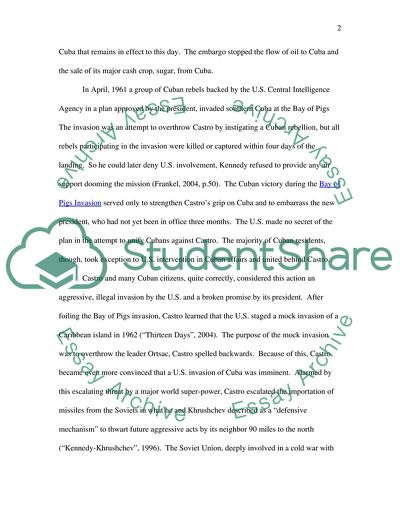Cite this document
(“How was the Cuban Missile Crisis perceived in the USA and Cuba Essay”, n.d.)
Retrieved from https://studentshare.org/miscellaneous/1535642-how-was-the-cuban-missile-crisis-perceived-in-the-usa-and-cuba
Retrieved from https://studentshare.org/miscellaneous/1535642-how-was-the-cuban-missile-crisis-perceived-in-the-usa-and-cuba
(How Was the Cuban Missile Crisis Perceived in the USA and Cuba Essay)
https://studentshare.org/miscellaneous/1535642-how-was-the-cuban-missile-crisis-perceived-in-the-usa-and-cuba.
https://studentshare.org/miscellaneous/1535642-how-was-the-cuban-missile-crisis-perceived-in-the-usa-and-cuba.
“How Was the Cuban Missile Crisis Perceived in the USA and Cuba Essay”, n.d. https://studentshare.org/miscellaneous/1535642-how-was-the-cuban-missile-crisis-perceived-in-the-usa-and-cuba.


